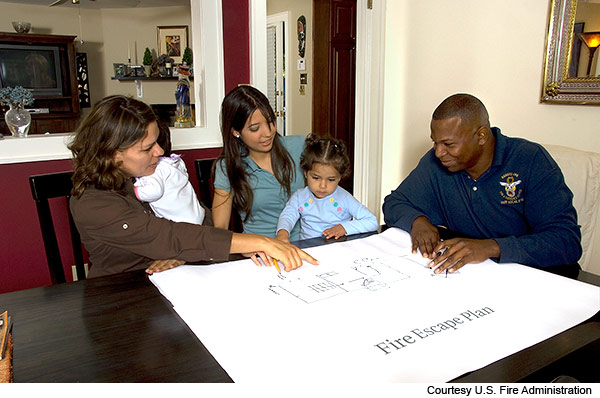Installing the proper safety equipment and having an emergency escape plan are two critical things that can make a difference in the event of a house fire. Make the necessary preparations now to improve the chances that your family will survive a house fire.
Develop an emergency escape plan
- Create a plan that includes escape routes from each room of your home
- Practice your plan with all members of your household
- Review the plan at least twice a year when all members of your household are present
- Update the plan when you make changes, such as adding a finished basement or rearranging furniture
- Post the plan on your refrigerator where family members will see it regularly and commit it to memory
Obtain safety ladders
- For multilevel homes, safety ladders are invaluable. You can find them at most building supply stores in compact styles that can be installed under a window.
- If possible, install one in every bedroom above ground floor
A few words about smoke alarms
- Install and check smoke alarms
- Install both battery and electric-wired smoke alarms on every level of your home, including basements, attics, outside each bedroom and inside each sleeping room
- Change smoke alarm batteries twice a year
- Test smoke alarms once a month, if not more often
- Replace battery-operated smoke alarm units every eight to10 years.
For more information on fire safety and creative ways to educate your children, visit the National Fire Protection Association’s public information site.
More fire prevention information:
Kitchen a hot spot for home fires, injuries
Correctly placed, working smoke alarms save lives
Carbon monoxide: Combustion’s deadly companion
College students may need fire prevention refresher
This loss control information is advisory only. The author assumes no responsibility for management or control of loss control activities. Not all exposures are identified in this article. Contact your local, independent insurance agent for coverage advice and policy service.

